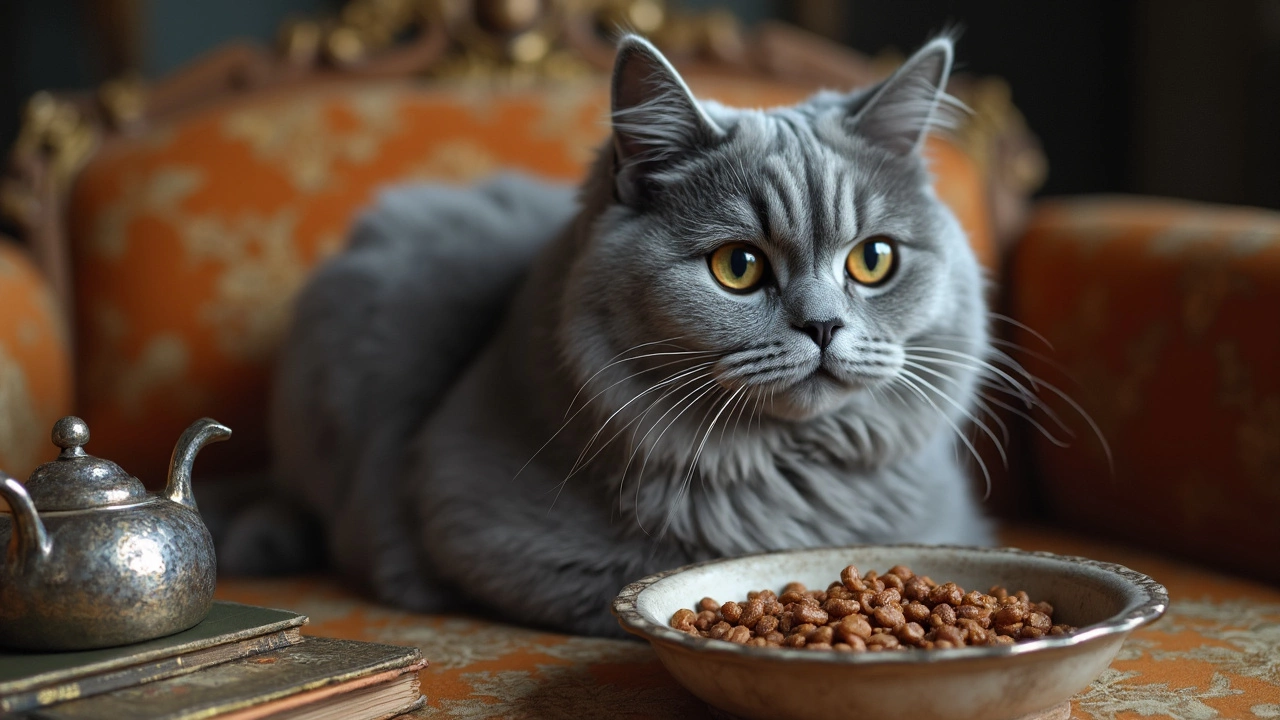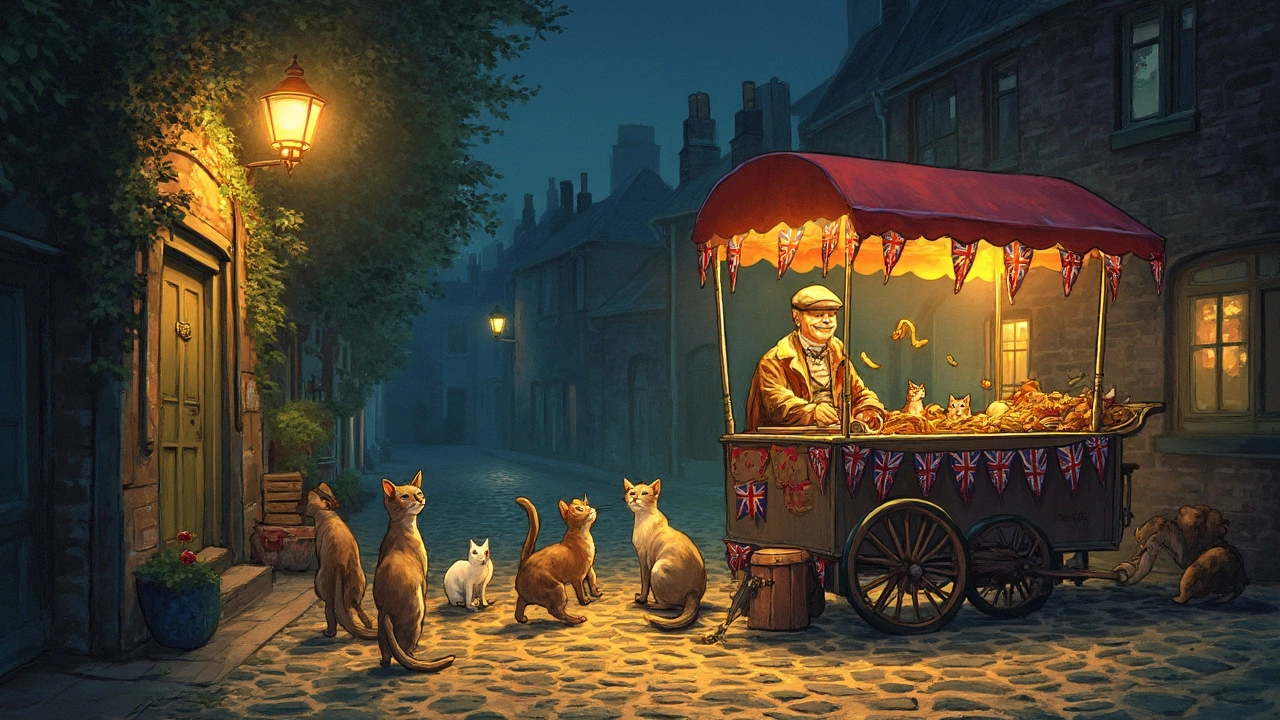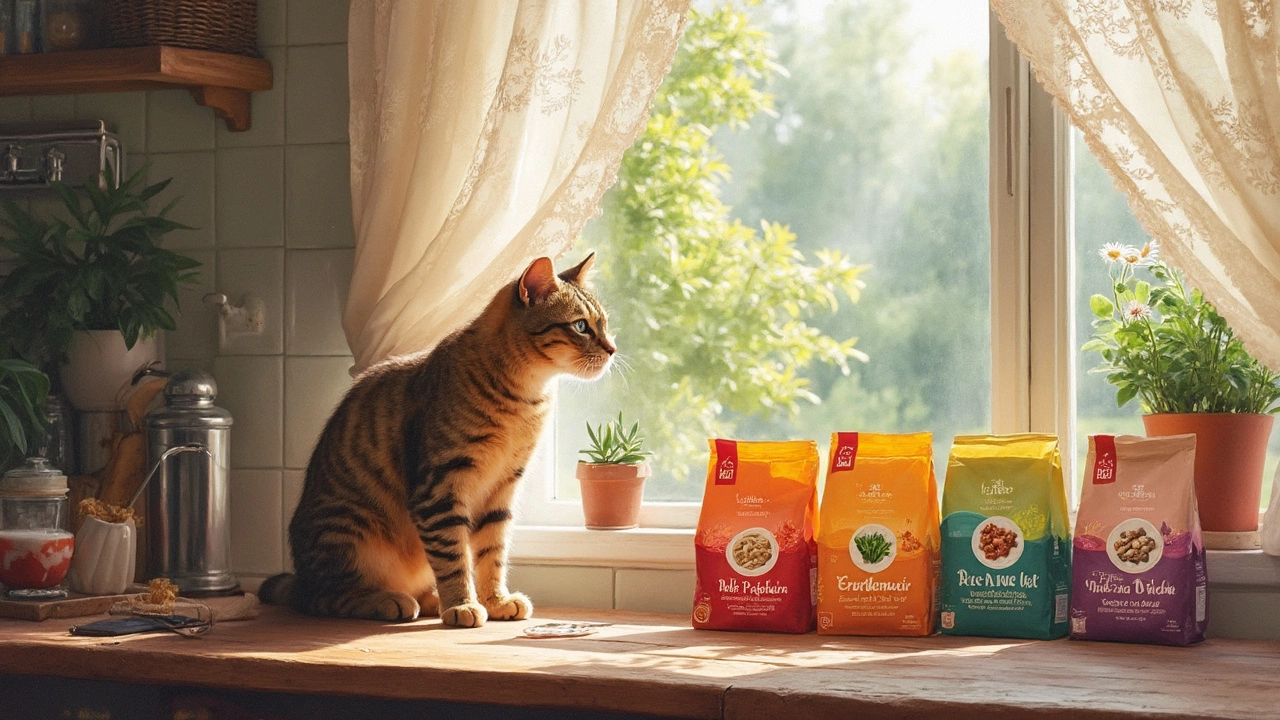Ever looked into those big, questioning eyes of your cat and wondered if the food you're pouring into their bowl is enough? Let's break it down. Cats, being the obligate carnivores they are, derive their nutrition primarily from animal proteins. While dry cat food seems convenient, you might be asking if it covers all their nutritional bases.
Dry foods, often called 'kibble', are popular due to their ease of storage and lower price tags. They're loaded with proteins and fats necessary for your feline friend's energy. But hey, here's a curveball: these crunchy bits usually have lower moisture content compared to wet food. Cats don't naturally drink a lot of water, so they rely on their food for hydration. What about a trade-off there? Let's explore what that means for your pet's health!
- Understanding Cat Nutritional Needs
- Benefits of Dry Food
- Drawbacks of an All-Dry Diet
- Balancing the Diet
- Tips for Feeding Cats
Understanding Cat Nutritional Needs
So, let's talk about what makes a cat tick when it comes to their diet. Unlike dogs, cats can't thrive on a diet full of carbs. They're obligate carnivores, which means they truly need meat as a significant part of their diet. Protein is a big deal for them, and it's what helps maintain their muscles and energy levels.
Cat food needs to have specific nutrients like taurine, an amino acid, which is absolutely essential because they can't produce it on their own. Lack of taurine can lead to some serious health issues, including heart and vision problems. Then there's the fat, another key player, providing energy and maintaining normal growth and development.
Macronutrient Breakdown
Breaking it down further, we see that a cat diet ideally consists of high protein, moderate fat, and minimal carbs. You might be surprised, but too many carbs can be problematic for our furry pals. Their bodies aren't made to process grains and fillers that often make up dry cat food.
| Nutrient | Ideal Percentage |
|---|---|
| Protein | 30-40% |
| Fat | 15-20% |
| Carbs | <10% |
Vitamins and minerals are also crucial. Think calcium for strong bones or vitamins E and A for healthy skin and eyes. These often get overlooked but are super important in feline nutrition.
Water: The Overlooked Element
Cats don’t naturally have a strong thirst drive, so they get most of their water from food. In the wild, what they eat would be about 70% water, so with dry food sitting pretty low on moisture, around 10%, you're looking at a shortfall in hydration. Dry cat food alone might not provide enough water, so always ensure fresh water is available.
Benefits of Dry Food
Now, let's chat about why dry food is such a hit among cat parents. One of the big perks of dry cat food is the convenience it offers. It's super easy to store and doesn't spoil as fast as wet food once opened. You can leave it out for your kitty to graze on throughout the day without worry.
Another plus? It's often kinder on your wallet. Generally, dry cat food is more budget-friendly, and you can buy it in bulk. Plus, kibble is less messy, and if you’ve ever had to clean up cat food bits, you know that’s a win.
Dental Health Benefits
Here's something you might not know: the crunchy texture of dry cat food can help with your cat’s dental health. Chewing on kibble can reduce tartar buildup. Think of it as a tiny toothbrush working away every time they munch.
Nutritional Content
Many quality dry foods are fortified with essential nutrients, including feline nutrition staples like taurine, vitamins, and minerals. This ensures your cat's diet isn’t lacking even if they aren't eating a variety of food.
Practicality
Live in a humid climate or have a tight schedule? Dry food is incredibly practical. It doesn't spoil easily, making it perfect for busy households. Cats can nibble at their leisure, and you won't have to worry about frequent restocking or bad odors.
| Benefit | Description |
|---|---|
| Storage | Easy to store without refrigeration |
| Dental Health | Helps reduce tartar |
| Cost | Usually more affordable |
| Nutrients | Often fortified with essentials |
These highlights make dry cat food not only a convenient choice but often a practical one for many cat owners. With the right balance and quality selection, it can be a great part of your cat's diet.

Drawbacks of an All-Dry Diet
While a bowl of dry cat food is super convenient for you, feeding this alone can have a few downsides for your furry buddy. Let's dive into the nitty-gritty.
Hydration Issues
The most talked-about issue with an all-dry diet is hydration. Cats evolved as desert animals, which means they don't have a natural thirst mechanism like dogs do. In the wild, they'd get most of their water intake through their prey. But dry cat food lacks the moisture content cats need. Imagine munching on crackers all day without enough water; that's how it can be for them.
Potential Obesity Risk
Kibble is calorie-dense, and pet parents can easily get into the habit of free-feeding. Without portion control, your cat might consume more calories than needed, leading to obesity. Obesity in cats can lead to serious health problems like diabetes and arthritis.
Nutritional Imbalance
While many dry cat foods are fortified with necessary nutrients, some could be lacking in essential components like taurine or specific fatty acids needed for their skin and coat health. Always ensure that the dry food you choose meets AAFCO nutrition standards for cats.
Dental Health Misconception
There's a belief that kibble helps clean your cat's teeth, but the truth is, most cats don't chew their food thoroughly enough for it to be effective. If dental hygiene is a concern, a dedicated dental routine might be the better route.
Urinary Tract Health
Cats on an all-dry diet are often at higher risk for urinary tract infections due to lack of moisture intake. Getting them to stay hydrated through alternative ways, like a cat water fountain, can be beneficial.
| Health Concern | Potential Impact |
|---|---|
| Hydration Issues | Increased risk for kidney problems |
| Obesity Risk | Diabetes, joint problems |
| Urinary Tract Health | Infections, blockages |
So, while dry cat food is handy, balancing it with wet food can help offset these drawbacks and keep your pet hydrated and healthy!
Balancing the Diet
Feeding your cat isn't just about keeping them from starving; it's about making sure they're thriving. So, how do you effectively balance a diet with dry cat food? Let's dive into the essentials.
Providing Essential Nutrients
First things first, understand that even the best dry food might not give your cat everything it needs in the right amounts. Start with a cat diet that emphasizes animal proteins because, remember, they're obligate carnivores. Look for dry foods with high protein content—ideally from real meat sources like chicken or fish.
Incorporating Wet Food
Mixing some wet food can be a great way to up the moisture levels in your cat's diet. Wet food helps with hydration, which is key since cats don’t naturally have a high thirst drive. Try combining their dry food with wet food a few times a week to ensure they're not missing out on important moisture.
Monitoring Portions
It's critical to adhere to serving sizes recommended on the packaging or as advised by your vet. Balance is key, so you wouldn't want to overdo it on calories, even if it's just dry cat food.
Supplementing Wisely
Consider supplements for nutrients like taurine, omega-fatty acids, and vitamins when necessary. It's always a smart move to consult with your vet before introducing new supplements to your cat's diet to avoid overloading them with unnecessary extras.
For those who love data, check out this simple breakdown of what's often missing in a solely dry cat food diet:
| Nutrient | Requirement |
|---|---|
| Water | 30%-50% from food |
| Taurine | Essential, especially for heart and vision health |
| Amino Acids | Crucial for overall function |
By ensuring your cat’s diet is balanced, you're setting them up for years of purring, playfulness, and perfect health. It's all about paying attention to the details and keeping them in tip-top shape!

Tips for Feeding Cats
Feeding your cat properly isn't just about filling their bowl with dry cat food. It's about ensuring a balanced and healthy diet that considers their unique nutritional needs. Let's dive into some practical tips to keep your feline friend happy and healthy.
1. Mix it Up
If your budget allows, consider mixing dry cat food with wet food. This helps boost hydration levels and provides a more varied diet.
2. Watch the Portions
It's easy to overfeed cats, especially since they don't always self-regulate. Follow feeding guidelines on the food package, but remember these are just starting points. Keep an eye on your cat's weight and adjust as needed.
- If your cat seems to be gaining too much weight, look at the food schedule and adjust.
- Prayer for a healthier, leaner kitty? Smaller portions might be the trick.
3. Consistent Mealtime
Try to feed your cat at the same times every day. This helps regulate their digestion and creates a routine they can look forward to.
4. Clean Water Always
Cats need plenty of fresh water daily. Dehydration is a risk, especially if they're on a dry cat food diet.
5. Pay Attention to Ingredients
Look for foods with high protein content and limited fillers. Cats need meat, so ingredients like chicken or fish should be at the top of the list. And be wary of artificial additives.
6. Special Diets
If your cat has health issues, consult a vet about special dietary needs. Sometimes specific foods can help manage conditions like allergies or urinary tract problems.
In the end, feeding your cat isn't rocket science. Listening to their needs and consulting experts when necessary can make all the difference. Cats might be picky, but armed with the right info, you can meet their dietary needs head-on.
